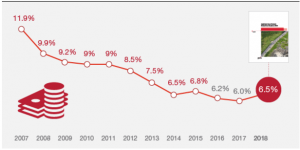There is never a time more appropriate for putting our words into action than in the midst of unforeseen crises and disasters. We all speak of our employees being our biggest asset, of creating a workforce that is engaged and more productive. We know that when we treat our employees well it builds loyalty, a great culture and better metrics at the bottom line. But how many of us really show our employees, in a meaningful way, that we care about them as more than just employees? That we care about their lives and families outside of work?
I am proud to work for a Company that does just that in a bigger way than I have previously witnessed. The unfortunate, recent, back to back hurricanes have devastated parts of Houston, Texas and many parts of Florida. While many companies put out words of encouragement to stay safe, how many really went the extra mile, went above and beyond?
Here are just a few of the more meaningful ways you can show your employees that you care and, hopefully set an example for other companies to follow:
Full Pay
Ensure your workforce that they will continue to be paid full pay for all the hours/days they are unable to get into the office to work due to the storm or subsequent damage or flooding. Many employees live very close to their paychecks and losing even 1-2 days of pay creates an undue hardship and stress on the family.
Insurance
Many employees do carry renter’s or homeowner’s insurance, as well as car insurance, but may not be able to easily afford the deductibles. Some have purposely chosen policies with lower premiums and higher deductibles in the hopes that they would not run into a situation where they needed them. Most of these deductibles are in the $100-$500 range. Think about what it would mean to your employees if you were to offer to reimburse them for their deductibles?
Housing
We are fortunate enough to be a property management company with homes all over the US. We offered all of our employees under evacuation orders, vacant homes to move into, on a short term basis, in other geographical areas out of harm’s way. Even if you are not so fortunate as to have vacant homes to offer, you can offer to pick up the cost of hotels for the time that the employees are forced to evacuate.
Donations
It probably goes without saying that others want to help in times of need. Set up a Red Cross donation through payroll deduction. Make it easy for the rest of your workforce to assist those in need. When we set this up last week, we have over 20% participation with 45 minutes.
Take this opportunity to put your words into action and show your employees that you do truly care about what they and their families are going through and you are here to help. It’s time we learn to take care of one another out of and in the workplace!








